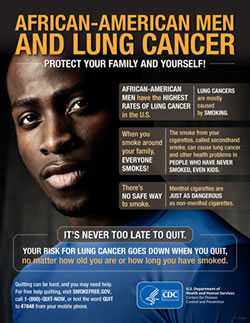Previous Health Equity Matters Newsletter
News You Can Use!
New CDC Interactive Portal Provides City and Neighborhood Health Data

Finding city-and neighborhood-level health data for America’s 500 largest cities is now available through CDC’s new interactive web application. The 500 Cities Project identifies, analyzes, and reports on 27 chronic disease measures focusing on conditions, behaviors, and risk factors that have a substantial effect on people’s health. It represents a first-of-its-kind effort to provide city- and neighborhood-level health estimates for a large proportion of the nation’s population. Americans face many health-related challenges, including chronic conditions such as heart disease, arthritis, and diabetes and negative health behaviors, such as insufficient physical activity. Until now, data to effectively address these and other health challenges facing cities and neighborhoods have been limited.
“Having the ability to report and map health data at city and neighborhood levels is a game changer for public health,” said Wayne H. Giles, M.D., director of CDC’s Division for Heart Disease and Stroke Prevention. “Local level data available through the 500 Cities website provide health information to better inform and target strategies that are proven to work in improving health.”
Statistical small area estimation techniques are used to model the prevalence estimates for the cities and neighborhoods from the CDC Behavioral Risk Factor Surveillance System. The new web application enables public health professionals, policymakers, and researchers to see and use the data to effectively address and target interventions to specific areas where they are most needed. The interactive mapping application enables users to zoom in to their neighborhood and look at local data compared with data for the entire city.
“The 500 Cities Project reflects an innovation in health data for more than 100 million people – a third of the U.S. population,” said Donald F. Schwarz, vice president for program at the Robert Wood Johnson Foundation. “For the first time, anyone who cares about the health of those living in our cities can access data down to the city and neighborhood levels for both the conditions and behaviors that have a substantial impact on population health. This is also the first time that cities can access data on how neighborhoods compare across cities.”
The 500 Cities data can be used to:
- Identify the chronic health issues facing a city or neighborhood
- Identify emerging chronic health problems
- Establish key health goals
- Develop and implement effective and targeted prevention activities
“To ensure the health of America’s neighborhoods and communities, it is vital to understand the scope of the nation’s most pressing health challenges,” said Judith A. Monroe, M.D., president and CEO of the CDC Foundation. “We are grateful to the Robert Wood Johnson Foundation for this important grant, and are excited to see the potential for this data.”
The 500 Cities Project is made possible through a grant to the CDC Foundation from the Robert Wood Johnson Foundation. To learn more about the 500 Cities Project, visit CDC’s website.
New Infographic Focuses on Lung Cancer in Black Men

African-American men have the highest lung cancer death rates in the United States. Raising awareness about this fact is the purpose of a new infographic that highlights the consequences of cigarette smoking among African American men. The Tobacco-Related Cancer Workgroup, a collaboration between the Division of Cancer Prevention and Control and the Office on Smoking and Health, at CDC produced the piece. The infographic presents linked, plain language messages about lung cancer, cigarette smoking, secondhand smoke exposure, and smoking cessation resources.
According to CDC research, while fewer people are smoking cigarettes, it is still the number one cause of lung cancer. More men and women in the United States die from lung cancer than any other type of cancer. African-Americans, especially children, have higher exposure to secondhand smoke and its harmful effects than other groups.
The infographic shows the disproportionate burden of lung cancer among African-American men, how secondhand smoke exposure negatively impacts health, and the health benefits of quitting smoking—at any age. CDC’s call to action is for African-American men to protect themselves and their families by stopping smoking. The African-American Men and Lung Cancer infographic is available on CDC’s website.
Quitting can be hard, and you may need help. For free help quitting, visit smokefree.gov, call 1-(800)-QUIT-NOW, or text the word QUIT to 47848 from your mobile phone.
Medical Nonadherence–A Major Public Health Concern for At-Risk Populations

Annually in the United States, medication nonadherence accounts for 125,000 deaths, 11% of hospitalizations, and $100 billion to $300 billion in additional spending. It is also a major public health concern for chronic disease prevention and management. Approximately 20% to 30% of medication prescriptions are never filled, and patients do not continue treatment as prescribed in about 50% of cases.
Public health practitioners, including state and local health department personnel, are critical to identifying community needs affecting health status, performing chronic disease surveillance, and identifying at-risk populations. To help these professionals, CDC has released a series of videos on improving medication adherence in English and Spanish. You can access the Help Patients Take Blood Pressure Medicines As Directed video for professionals and its Spanish version Ayude a los pacientes a tomar los medicamentos para la presión arterial tal como se les indicó, and the Tips for Taking Blood Pressure Medicines As Directed video for consumers on CDC’s website.
To help, public health practitioners can improve cardiovascular disease outcomes through data collection, analysis and reporting, informing policy decisions, promotion of evidence-based medication use processes and effective medication-taking behaviors, information dissemination, and stakeholder engagement. Tactics that can be employed include the following:
- Monitoring medication nonadherence.
- Detecting and investigating reasons for medication nonadherence.
- Conducting research related to improving medication adherence.
- Developing and implementing health strategies that reduce nonadherence.
- Supporting the implementation of non-adherence prevention strategies.
- Promoting safe and effective medication-taking behaviors.
- Fostering a safe, healthy, and effective medication use process.
- Providing leadership and training in medication adherence initiatives.
Public health practitioners have an opportunity to partner with patients and health care systems, including providers, medical practices, pharmacies, hospitals, community health workers, and insurers, to prevent and control complications of chronic conditions through promoting improved medication adherence. View the Million Hearts® Medication Adherence webpage for more resources on how you can improve medication adherence.
New Language Access Portal Offers Multilingual Health Information
The National Institute on Minority Health and Health Disparities (NIMHD) has launched a new resource to help those who work with people with limited English proficiency: the Language Access Portal (LAP). The LAP contains information, in multiple languages, for six disease areas where major health disparities have been identified in non-English speaking populations. Disease areas currently include cancer, diabetes, cardiovascular disease, and more. New disease areas will continue to be included and additional resources will be incorporated as they become available. The new portal supports NIH’s comprehensive Language Access Plan by providing access to reliable cross-cultural and linguistically appropriate health information from NIH and other federal agencies. You can visit the Language Access Portal on the NIMHD website.
NIH Hosts Inclusion Across the Lifespan Workshop

The National Institutes of Health (NIH) is convening a workshop of experts on the appropriate inclusion of pediatric and older populations in research studies involving human subjects. This action is in response to scientific need and a congressional mandate in the 21st Century Cures Act (P.L. 114-255). The workshop will bring together experts in clinical research to discuss barriers and opportunities for participation of these populations in clinical studies, including those supported by NIH.
The workshop will be held on the NIH campus June 1-2, 2017, with limited space available for in-person participation. For registration information, visit the Inclusion Across the Lifespan Workshop webpage. For those who are unable to attend in person, the plenary sessions will be videocast so that you may view the presentations and reports.
- Page last reviewed: February 28, 2017
- Page last updated: February 28, 2017
- Content source:


 ShareCompartir
ShareCompartir